Science Features
Every year, landslides cost the nation 1 to 2 billion dollars in damage. Falling rocks, mud, and debris flows are one of the most common and sometimes deadly hazards faced by all U.S. citizens, yet there is still a lot we do not know about how and why they happen. Now, scientists at the USGS are asking the public to help them track landslides to better understand how to protect lives and property.
Did You See It? Calling on Citizens for Help
Did You See It? (DYSI?) is a new website developed by the USGS Landslide Hazards Program that asks anyone who saw a landslide anywhere in the country to report their observations. These observations will build a much larger and more complete database that will help scientists gain a clearer picture of how landslides affect the entire United States.
“If landslides have occurred historically in an area, there is a good chance they may strike again if the conditions are right,” explains Peter Lyttle of the USGS Landslide Hazards Program. “So knowing where landslides have occurred has a very practical application.”
For example, said Lyttle, knowing when landslides have happened helps scientists make better correlations with rainfall, earthquakes, or other events known to induce landslides. When it comes to developing and testing tools for landslide early warning, keeping track of how soon landslides occur after rain begins to fall is crucial. With DYSI?, the much higher volume of observations and information made possible by turning to the public for help will give scientists a much richer picture and enhance the accuracy of their predictions.
The USGS hopes that by asking citizens to help they can both spread the word about landslides and expand the capabilities of their 20-person scientific team.
“Thousands of landslides occur in the United States every year, of almost every imaginable scale,” says Lyttle. “Ultimately, we would like to someday have an inventory of all those landslides.” This inventory will allow scientists to better understand where, when and why landslides happen, how they impact people and infrastructure, and how to best prepare.
How to Use “DYSI?”
Did you see a landslide? Go to http://landslides.usgs.gov/dysi/. There, choose the tab for “Report a landslide.” The site asks you to submit observations ranging from the very basic to the more complicated. You can keep it quick and simple by just reporting the time and place you saw a landslide. If you have more time and information, you can upload photos, report damages, and describe the landslide, as well as enter the type of slide and its reach. Was it a rotational, fall, flow, or spread landslide? (The site explains each type with descriptions and images.) Did it occur during or after heavy rains or an earthquake? Did it damage any houses, roads, or bridges? How far did its damage extend? All of these details tell scientists what types and intensities of landslides are likely to occur in that area in the future, and when they are likely to occur. This information gives homeowners, builders, and other decision makers a clearer sense of the risk they face.
Hurricanes and Wildland Fires Mean More Landslides

House damaged by debris flows generated in Mullally Canyon in response to a rainstorm on February 6, 2010. The drainage basin above this home was burned the previous summer by the Station Fire, the largest fire in the history of Los Angeles County.
Hurricane season in the Atlantic Ocean began June 1, 2012, signaling the increased likelihood of hurricanes impacting the East Coast until November. And on May 30, 2012, the Whitewater-Baldy Complex, which began burning May 16, became the largest wildland fire in New Mexico’s history, having now burned almost 271,000 acres, and reminding us of the ever-increasing intensity and frequency of fires in the intermountain West and throughout the United States. Fires and hurricanes can ultimately lead to dangerous landslides; hurricanes can bring heavy rains that, in turn, cause landslides in hilly areas.
In late August 2011, for example, Tropical Storm Irene brought rain and landslides to Puerto Rico and the northeastern states of Pennsylvania, New York, Connecticut, and Massachusetts. Winter storms brought large amounts of rain and landslides to western Oregon in January, and again in March 2012. These events spurred and strengthened landslides in the East and the West, closing roads and severely damaging homes and transportation infrastructure. And when hilly areas have been denuded by serious wildfires, the loss of trees and vegetation that would normally slow slides means a much less severe storm can cause more severe damage.
Citizen Science at the USGS and Developing “DYSI?”
The idea for the “DYSI?” project came from another successful citizen-science project developed by the USGS. “Did You Feel It?” (DYFI?) asks the public to report whether they felt an earthquake and how strong the shaking seemed to them. The public has participated in “DYFI?” since the 1990s by sending in questionnaires and eventually going online to report their earthquake experiences. “DYFI?” reports have been essential to building scientific understanding of earthquakes and their impact.
USGS scientists based the questionnaire for “DYSI?” on paper landslide report forms originally developed by international working groups and state geological surveys. The questionnaire is designed to collect basic facts needed to describe a landslide and assess damages.
A National Threat
Unlike earthquakes, which are more likely to cause damage in parts of the country with active seismic zones, landslides are likely to affect just about any area of the United States. “Landslides are the one natural hazard that almost every citizen in the United States could potentially experience,” says Lyttle. He adds, “This is truly a national problem. It’s a problem that’s affecting our economy, causing billions of dollars in damage every year. We need to sit up and pay attention.”

While Hurricane Isaac has passed, scientific work to understand the storm’s impact on Gulf Coast states continues. Read more

A magnitude 7.6 earthquake struck near the west coast of Costa Rica on September 5, 2012 at 14:42:10 UTC. Read more

Real-time map showing the extent of flooding (black dots) and drought (red dots) in the U.S. Read more

USGS scientists, engineers, and technicians are working along the Gulf coast in response to Hurricane Isaac. Read more

USGS scientists are providing up-to-date information. Read more

The U.S. Geological Survey is keeping careful watch as Tropical Storm Isaac continues to track northwest toward the west coast of Florida and the Gulf of Mexico. Read more

It was one of the largest recorded earthquakes to occur in the east over the last century. Find out what scientists have learned in the past year. Read more

USGS scientists improve systems to monitor and forecast volcanic activity and track volcanic ash to help communities prepare. Read more

These 3 young scientists have forged ahead with innovative research at the frontiers of science. Learn more

The majority of the nation is facing dry conditions; in most areas drought conditions are expected to persist or intensify. Read more

Please comment on the USGS’ draft science strategies! Read more

Citizen volunteers, portable instruments, and real-time maps help improve gathering of and access to earthquake data.Read more

The USGS and partners are designing an earthquake early warning system for California to help save lives and property.

Science or Soundbite? Is the recent increase in midcontinent earthquakes natural or man-made? Find out here.

Timing is everything! Consider helping track changes in spring’s arrival

A magnitude-8.6 earthquake struck off the west coast of northern Sumatra Wednesday, April 11, 2012, at 8:38 a.m., UTC at the epicenter.

A magnitude-7.4 earthquake struck in the Mexican state of Oaxaca Tuesday, March 20, 2012, at 12:02 p.m., local time at the epicenter.

Flood Safety Awareness Week is March. 12-16. What can you do to prepare?

National Groundwater Awareness Week is Mar. 11-17, 2012. See how USGS science is connecting groundwater and surface water.

Since Japan’s March 11, 2011, Tohoku earthquake and subsequent tsunami, scientists at the USGS have learned much to help better prepare for a large earthquake in the United States.

Five USGS employees honored with Distinguished Service Awards for their service to the nation
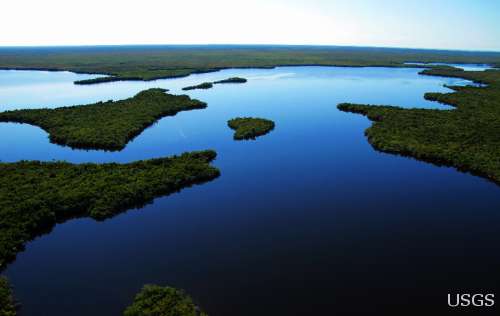
The proposed USGS budget reflects research priorities to respond to nationally relevant issues, including water quantity and quality, ecosystem restoration, hydraulic fracturing, natural disasters such as floods and earthquakes, and support for the National Ocean Policy, and has a large R&D component.
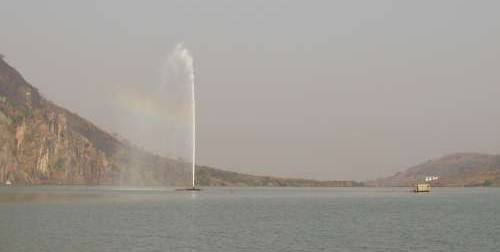
Exploding lakes in Cameroon, Africa, have killed people and livestock. Find out how USGS science is helping prevent such an event from occurring again.

Everyone is familiar with weather systems on earth like rain, wind and snow. But space weather – variable conditions in the space surrounding Earth – has important consequences for our lives inside Earth’s atmosphere.

Scientists and communities are working together to make science more useful and communities safer. What one emergency manager has to say.

Modern volcano monitoring in the United States began with the founding of the Hawaiian Volcano Observatory in 1912. Living with volcanoes

Shaking from Oklahoma's M5.6 main shock, the largest quake in the State's history, was felt from St. Louis to Lubbock. Number of quakes increasing in Oklahoma

A magnitude-7.2 earthquake struck eastern Turkey on Sunday, October 23, 2011. History of strong earthquakes

It's only the beginning of their careers, but these 3 young scientists have forged ahead with innovative research at the frontiers of science. How they've transformed their fields

Oct. 9-15, 2011, is Earth Science Week, themed "Our-Ever Changing Earth," and Oct. 12, 2011, is International Day for Natural Disaster Reduction. Answers to questions posed by a changing world

Fire managers and the public can access online maps of current wildfire locations, thanks to a Web-based mapping application provided by the USGS and its partners.
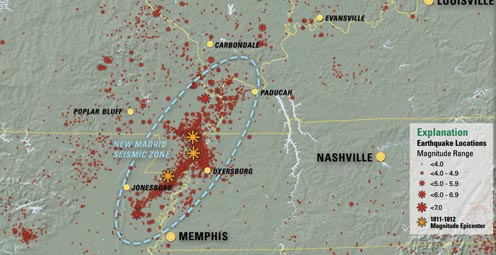
On Feb. 7, 1812, at about 3 a.m., a third, and probably most widely felt of three major earthquakes, occurred in the central Mississippi River Valley. Similar risk today.
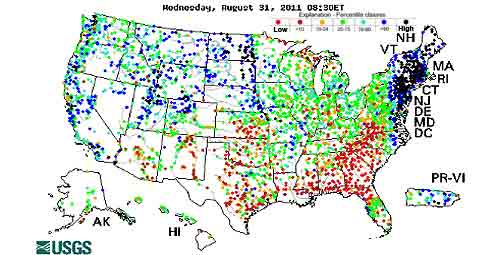
Rivers and streams are reaching record levels as a result of Hurricane Irene’s rainfall, with more than 80 USGS streamgages measuring record peaks.

Tuesday, August 23, 2011 at 01:51 PM a 5.8 Earthquake occurred 38 miles outside of Richmond, VA.
A new geologic map of Lassen Volcanic National Park and vicinity has been created. The map area includes the entire Lassen Volcanic Center, parts of three older volcanic centers, and the products of regional volcanism.
To better understand and reduce tsunami hazards, USGS scientists examined sediment deposited by the tsunami in and around Sendai, Japan, as part of an international tsunami survey team organized by Japanese scientific cooperators.
USGS crews continue to measure streamflow and collect water quality and sediment samples in the Ohio and Mississippi River basins using state-of-art instruments.
Many communities in South Dakota, North Dakota, Montana, Colorado, Wyoming and Iowa are dealing with record floodwaters and bracing for more flooding in the upcoming weeks.
Fire managers and the public can access online maps of current wildfire locations, thanks to a web-based mapping application provided by the USGS and its partners.
New Zealand has experienced another damaging earthquake close to the city of Christchurch, which is still recovering from the magnitude-6.1 earthquake that struck in February. This latest quake has resulted in additional damage to buildings and infrastructure.
The USGS-NASA Landsat 5 satellite captured this image of 39-mile track of destruction caused by a massive tornado on June 1 near Sturbridge, MA.
As hurricane season starts, researchers are modeling potential changes to coastal environments to identify communities vulnerable to extreme erosion during storms. Data collected before and after storm landfall are used to verify past forecasts and improve future predictions.
The effects of the March 11 magnitude 9.0 earthquake and resulting tsunami on Japan are being monitored using Landsat satellite data from the USGS.

The most recent earthquake in Japan affected water levels in groundwater wells all over the country. Water level fluctuations were recorded as far away as Illinois, Virginia, Missouri and Florida.

Volcanic activity continues in the Pu`u `O`o crater on Kilauea Volcano's east rift zone and in the Halema`uma`u Crater vent at Kilauea’s summit. Visit the USGS Hawaii Volcanoes Observatory site to get detailed Kilauea and Mauna Loa activity updates, recent volcano photos, recent earthquakes, and more.
Scientists unveil a catastrophic winter storm scenario that could possibly overwhelm California's flood protection system, and significantly disrupt Statewide social and economic systems.
Heavy rainfall could potentially destabilize hillsides. The USGS Landslide Hazards Web site has what you need to know if you live in an area prone to landslides.
The USGS and the National Weather Service have developed a new flood inundation map tool that enables management officials and residents to see where the potential threat of flooding is the highest along the Flint River near Albany, Georgia.
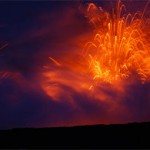
Volcanic eruptions have always been a part of human history; the American experience is no exception. On November 3rd, USGS’s Dr. John Eichelberger discusses new USGS programs which establish monitoring networks on all hazardous US volcanoes, to reduce the effects of volcanic hazards on communities.
Kilauea is Hawaii's youngest volcano and one of the world's most active. Get daily updates on ongoing eruptions from Kilauea's summit and east rift zone.
Looking for information on natural resources, natural hazards, geospatial data, and more? The USGS Education site provides great resources, including lessons, data, maps, and more, to support teaching, learning, K-12 education, and university-level inquiry and research.
The USGS PAGER system (Prompt Assessment of Global Earthquakes for Response) will now include estimated economic loss and casualty information. This system is used by emergency responders, government and aid officials, and the public to understand the scope of the disaster to develop the best response.
Flash flooding is one of the major causes of natural hazard-related deaths in the United States and is hard to predict, but data collected by the USGS is crucial to formulating better predictive models.
The USGS Science Strategy is a comprehensive report to critically examine the USGS's major science goals and priorities for the coming decade. The USGS is moving forward with these strategic science directions in response to the challenges that our Nation's future faces and for the stewards of our Federal lands.

In response to Hurricane Isaac, USGS has deployed several hundred storm surge sensors to collect information about the effects of Isaac on the Gulf Coast.
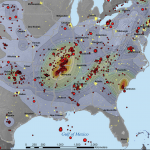
Join us on September 5th in Reston, VA for a free public lecture on the 2011 Virginia earthquake!

Join us on August 1 to learn more about the anatomy of flooding: What are the different causes of these extreme events, and how is USGS science helping prepare residents for future foods.

Join us on June 6 for a centennial look at the greatest volcanic eruption of the 20th century at our June Public Lecture!
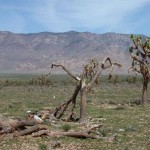
In recognition of World Forestry Day, let’s take a glimpse at USGS science to understand the fate of forests from climate change.

The Volcano Hazards Program announces the establishment of the USGS California Volcano Observatory (CalVO), which expands and replaces the former Long Valley Observatory.

The U.S. Geological Survey had a very busy 2011 — below are a few of our highlights from last year.

On Nov. 3, USGS scientists Patrick Barnard and William Ellsworth will present a public lecture in Menlo Park, CA, providing Bay Area residents information about USGS research in the San Francisco Bay Area, including recent discoveries beneath San Francisco Bay and ongoing studies to better understand earthquake probabilities and the potential hazards associated with strong ground shaking.

Join USGS scientists on November 2nd to discuss the seismology of the M5.8 Virginia earthquake, its effects, and its context in the geology of Virginia.
Accessibility FOIA Privacy Policies and Notices

![]() U.S. Department of the Interior |
U.S. Geological Survey
U.S. Department of the Interior |
U.S. Geological Survey
URL: www.usgs.gov/blogs/features/usgs_top_story/did-you-see-a-landslide/?from=textlink
Page Contact Information: Ask USGS
Page Last Modified: September 14, 2011



